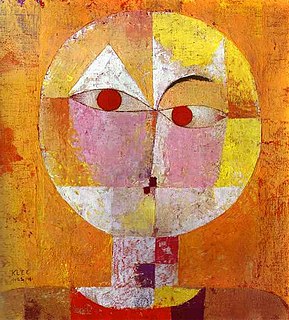 W
WCrystal Cubism is a distilled form of Cubism consistent with a shift, between 1915 and 1916, towards a strong emphasis on flat surface activity and large overlapping geometric planes. The primacy of the underlying geometric structure, rooted in the abstract, controls practically all of the elements of the artwork.
 W
WThe American artist Georgia O'Keeffe is best known for her close-up, or large-scale flower paintings, which she painted from the mid-1920s through the 1950s. She made about 200 paintings of flowers of the more than 2,000 paintings that she made over her career. One of her paintings, Jimson Weed, sold for $44.4 million, making it the most expensive painting sold of a female artist's work as of 2014.
 W
WGeorgia O'Keeffe created a series of paintings of New York skyscrapers between 1925 and 1929. They were made after O'Keeffe moved with her new husband into an apartment on the 30th floor of the Shelton Hotel, which gave her expansive views of all but the west side of the city. She expressed her appreciation of the city's early skyscrapers that were built by the end of the 1920s. One of her most notable works, which demonstrates her skill at depicting the buildings in the Precisionist style, is the Radiator Building—Night, New York, of the American Radiator Building.
 W
WGeorgia O'Keeffe made a number of Red Canna paintings of the canna lily plant, first in watercolor, such as a red canna flower bouquet painted in 1915, but primarily abstract paintings of close-up images in oil. O'Keeffe said that she made the paintings to reflect the way she herself saw flowers, although others have called her depictions erotic, and compared them to female genitalia. O'Keeffe said they had misconstrued her intentions for doing her flower paintings: "Well – I made you take time to look at what I saw and when you took time to really notice my flower you hung all your own associations with flowers on my flower and you write about my flower as if I think and see what you think and see of the flower – and I don't."
 W
WSenecio or Head of a Man Going Senile is a 1922 Cubist painting by Swiss-born artist Paul Klee. It is currently in the Kunstmuseum Basel.
 W
WThe Sick Child is the title given to a group of six paintings and a number of lithographs, drypoints and etchings completed by the Norwegian artist Edvard Munch between 1885 and 1926. All record a moment before the death of his older sister Johanne Sophie (1862–1877) from tuberculosis at 15. Munch returned to this deeply traumatic event repeatedly in his art, over six completed oil paintings and many studies in various media, over a period of more than 40 years. In the works, Sophie is typically shown on her deathbed accompanied by a dark-haired, grieving woman assumed to be her aunt Karen; the studies often show her in a cropped head shot. In all the painted versions Sophie is sitting in a chair, obviously suffering from pain, propped by a large white pillow, looking towards an ominous curtain likely intended as a symbol of death. She is shown with a haunted expression, clutching hands with a grief-stricken older woman who seems to want to comfort her but whose head is bowed as if she cannot bear to look the younger girl in the eye.
 W
WWater Lilies is a series of approximately 250 oil paintings by French Impressionist Claude Monet (1840–1926). The paintings depict his flower garden at his home in Giverny, and were the main focus of his artistic production during the last thirty years of his life. Many of the works were painted while Monet suffered from cataracts.
 W
WA Young Woman Reading is an oil on canvas painting by an unknown painter in the manner of the Dutch painter Johannes Vermeer. It is an example of Dutch Golden Age painting and is part of the collection of the Metropolitan Museum of Art.